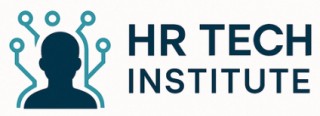
Understanding the Role of Recommender Systems in HR
The Influence of Recommendation Systems in HR
In recent years, the integration of recommender systems within human resources (HR) technology has emerged as a transformative trend. Recommender systems analyze large volumes of data to make personalized recommendations, facilitating decision-making processes in recruitment and employee engagement. These systems, powered by tools like RapidMiner, leverage data mining techniques to offer valuable insights.
Primarily, recommender systems function through collaborative filtering, content-based strategies, and hybrid recommender models. Collaborative filtering, for instance, involves analyzing user ratings and behaviors to suggest items or actions to similar users. Meanwhile, content-based approaches focus on matching user profiles with corresponding items, leading to improved recommendation accuracy.
The sophisticated algorithms at play within these systems, such as the based collaborative filtering and item-based filtering models, comprehend user preferences and deliver customized outputs. The RapidMiner studio serves as a robust platform for building these models, utilizing operators to refine the recommendation process, effectively creating a seamless user interface.
Despite the technological advantages, HR professionals face challenges in implementing these systems. Yet, when effectively integrated, recommender systems can redefine recruitment processes and elevate employee satisfaction by providing tailored content and insights.
The Mechanics of RapidMiner's Recommender System
Exploring the Framework of RapidMiner's Approach
RapidMiner stands out as a cutting-edge platform, offering a robust solution with its recommender system that enhances data-driven decision processes in HR. The core of RapidMiner's recommender system revolves around the seamless integration and effective use of both collaborative filtering and content-based filtering to generate personalized recommendations. Each user or operator within the system benefits from this intricate collaboration, ensuring data is leveraged effectively.
Collaborative filtering, an essential component of the system, places emphasis on user interaction and user ratings to develop insightful recommendations. This process involves the algorithm discerning similarities in user behavior, often referred to as user-user or user-item filtering. As a result, it manages to propose recommendations tailored to the individual preferences of the users.
Moreover, content-based filtering adds another layer of sophistication. By analyzing the attributes of items, such as resumes, skillsets, or job descriptions, this technique ensures that the recommendations are not only relevant but also aligned with the user's prior clicks and selections. This creates a well-rounded recommendation model.
The utilization of RapidMiner Studio enhances the power of these filtering systems through data mining, allowing HR professionals to dissect extensive datasets with ease. With its open data framework and user-friendly interface, setting up a recommendation model becomes an efficient task. The incorporation of a hybrid recommender approach can also amplify the precision of predictions, combining the strengths of various filtering methods. The International Journal of Data Mining and Specialist Systems highlights the significance of such hybrid methodologies in refining the recommendation system outcomes.
A pivotal part of the recommender extension is ensuring the algorithms keep evolving with continuous input, thus facilitating a superior recommender system. Antulov Fantulin’s research underpins the importance of leveraging user-generated content to refine the predictive abilities of recommendation systems further.
Improving Recruitment with Data-Driven Insights
Leveraging Data-Driven Insights to Transform Recruitment Strategies
The recruitment process can significantly benefit from RapidMiner's recommender system, with its robust data driven capabilities. By harnessing the power of data mining, recruiters can navigate vast amounts of information with ease, ultimately improving recruitment outcomes. A recommender system operates by using user data and item based filtering to create precise recommendations. In the recruitment context, this involves identifying potential candidates who best match the criteria set by employers. By employing collaborative filtering techniques, the system predicts which candidates are likely to receive favorable evaluations. Moreover, this approach helps in comparing different prospects by examining user ratings and historical data. In RapidMiner Studio, the process becomes streamlined, as its user-friendly interface allows for seamless integration of data and models. By utilizing operators specific to recommender systems, such as the item based collaborative filter, recruiters can compare and contrast applicants with precision. The system's ability to process open data and refine its recommendation model is invaluable. Furthermore, by implementing hybrid recommender systems, organizations can combine content based and collaborative filtering methods, creating a more comprehensive understanding of candidate profiles. This approach, validated by studies in the International Journal of Data, provides a balanced perspective, ensuring no vital attribute is overlooked. Ultimately, a well-implemented recommendation system not only aids the current recruitment process but also anticipates future needs by understanding trends and patterns. As recruitment becomes increasingly data driven, the adoption of recommender systems will continue to be integral, vastly improving operational efficiency and candidate experience. For those interested in delving deeper into the intricacies of optimizing HR tech, this Crafting Effective Questions for CEOs in HR Tech article provides substantial insights into strategic development.Boosting Employee Engagement and Retention
Leveraging Recommender Systems for Employee Interaction
In the realm of human resources, fostering a positive and engaging workplace is paramount. Recommender systems offer a valuable opportunity to increase employee engagement and retention through technology-driven processes. By utilizing data mining and advanced filtering techniques within RapidMiner Studio, HR professionals can better understand their workforce and cater to their needs. One key approach is leveraging collaborative filtering and content-based recommender systems to generate insights on employee preferences. For instance, by analyzing user ratings and click data, organizations can identify popular items or activities, such as training programs or company events, that align with employee interests. This personalized recommendation system helps promote activities that employees are more inclined to participate in, thereby enhancing engagement. RapidMiner's robust model development capabilities empower HR departments to configure hybrid recommender systems. These systems combine both item-based and user-item filtering methods, facilitating precise and targeted recommendations. They effectively function as powerful operators within the user interface, providing HR professionals with tailored suggestions for professional development opportunities tailored to individual user needs. Moreover, the inclusion of open data in these recommendation processes expands the scope of potential insights. By integrating external data sources, HR departments can adopt a holistic view of their organizational culture and employee engagement trends. Implementing satisfiable filtering-based recommender models allows a proactive approach to employee retention, addressing issues before they escalate and ensuring a healthy work environment.Challenges and Considerations in Implementing Recommender Systems
Implementation Hurdles and Strategic Planning for Recommender Systems
Implementing a recommender system within human resources tech requires careful navigation through certain challenges. HR professionals need to understand the complexities that arise when integrating such advanced technology into existing processes.
One of the main hurdles is the integration of diverse data sources. A effective recommender system relies on a vast amount of data collection, ranging from employee engagement records to traditional transactional data. This requires a robust data mining framework that RapidMiner Studio can facilitate by connecting various data streams efficiently. Still, the completeness and accuracy of data remain pivotal. With collaborative filtering and hybrid recommender models, obtaining user ratings and consistent item-based, and user-item behaviors is essential.
Another challenge is the quality and scope of the algorithmic processing. These systems need to deliver recommendations that add real value. Poorly designed algorithms can generate outputs with little relevance, reducing the efficiency and trust of the users. Sophisticated approaches like content-based recommendation systems and filtering-based, often applied within the RapidMiner ecosystem, can address these challenges by leveraging historical user interactions documented in places like international journals.
Furthermore, the complexity of user interface design in recommender systems plays a significant role in user acceptance. The user-friendliness of the interface is key to encouraging active engagement and ensuring that the recommendations are both accessible and understandable. Customization options should be available to meet the organization's unique needs and file management aspects like PDF outputs or collaborative interfaces need to be user-focused.
Lastly, ethical considerations regarding data use are increasingly important. The transparency in the recommendation process and the protection of user integrity ensures compliance and builds trust among users. Incorporating an open data policy with clear documentation can help mitigate these concerns, gaining user confidence whilst enhancing the overall recommendation model.












